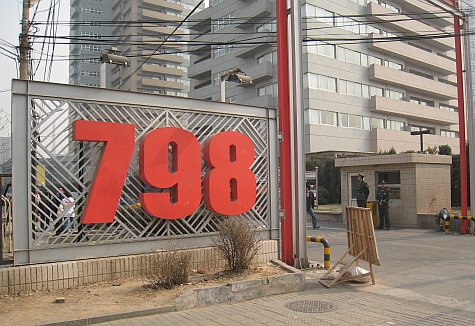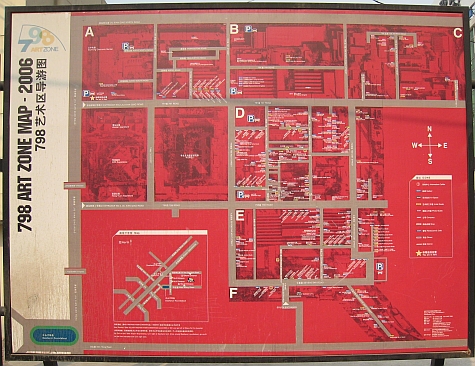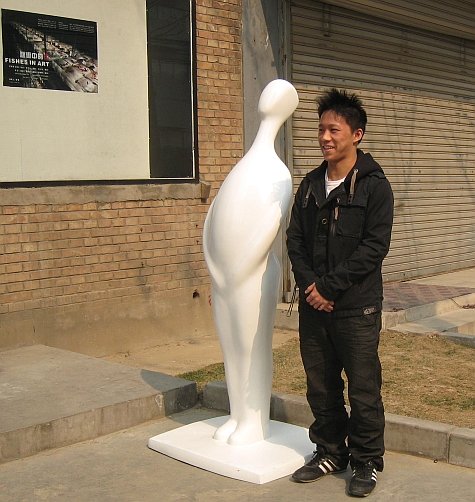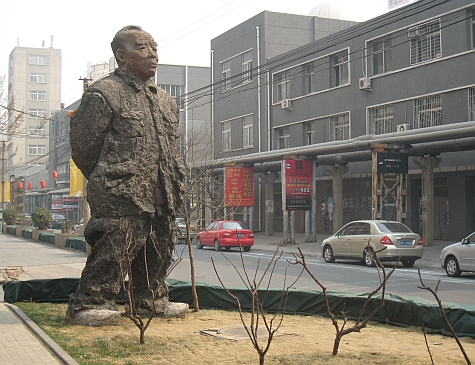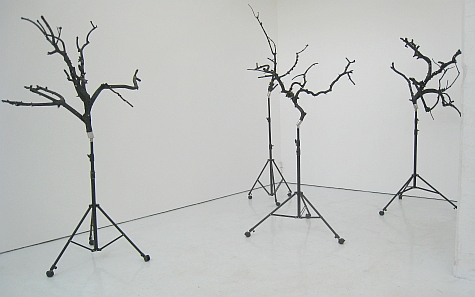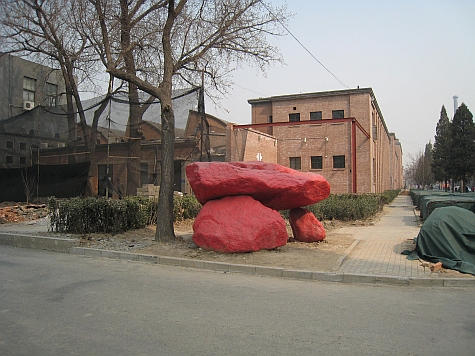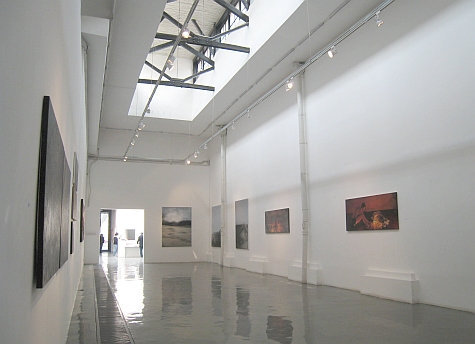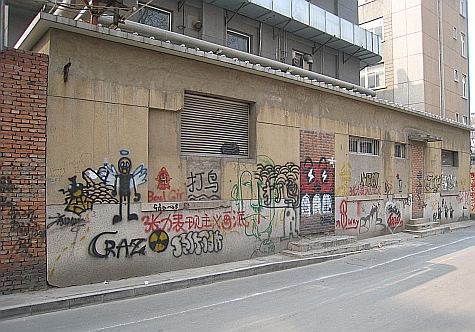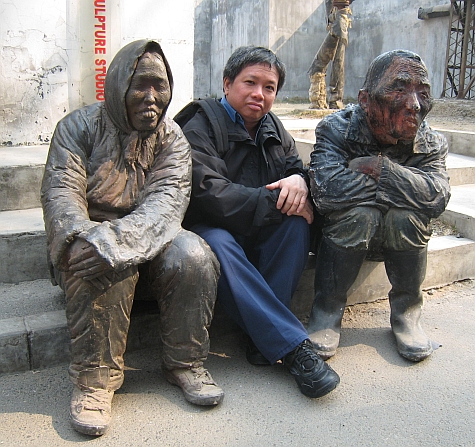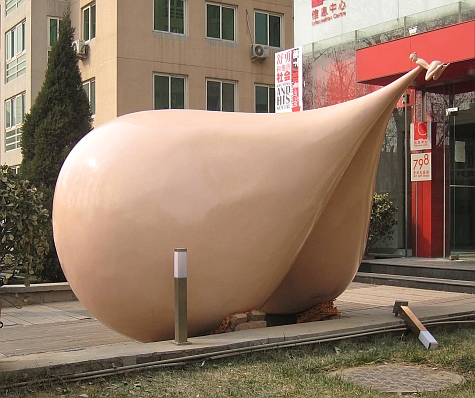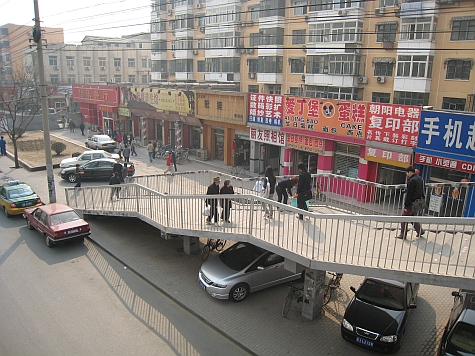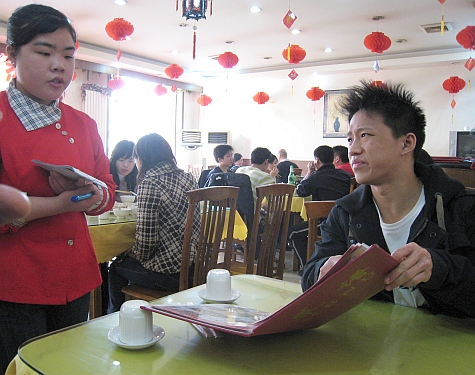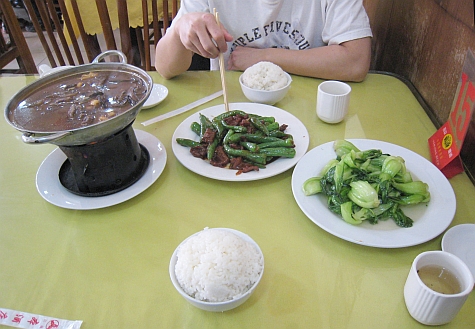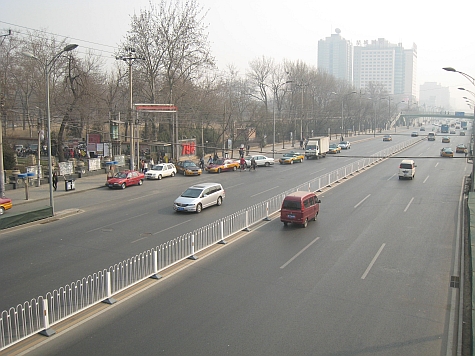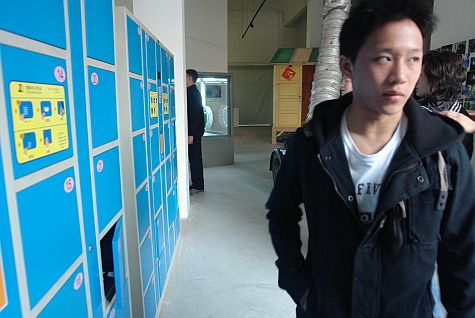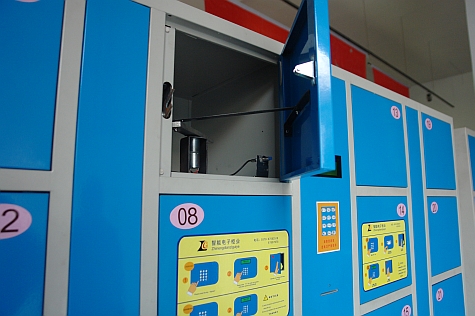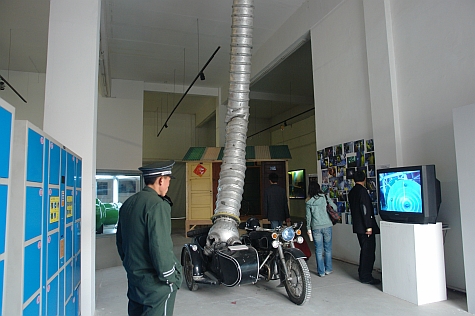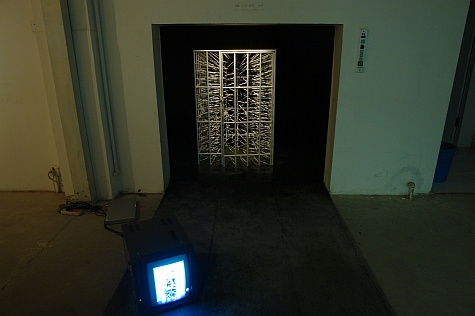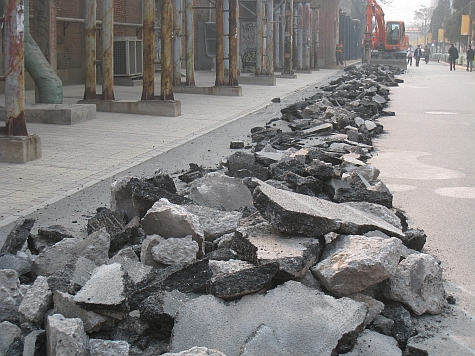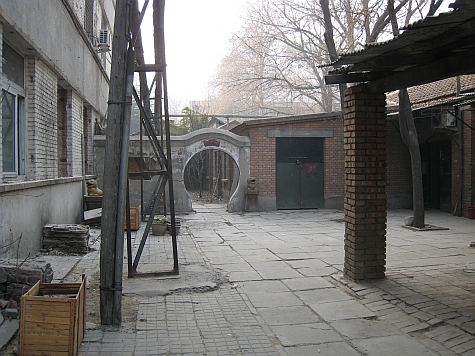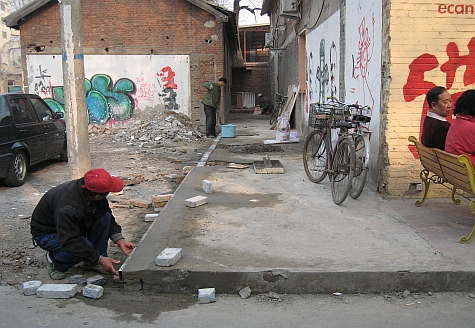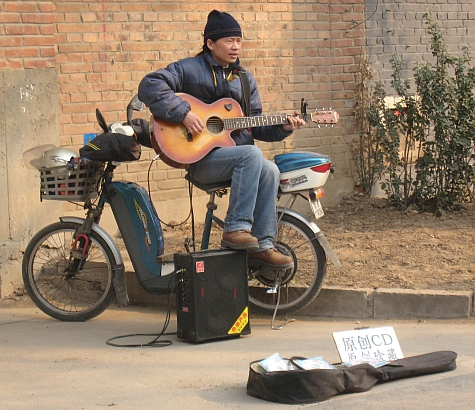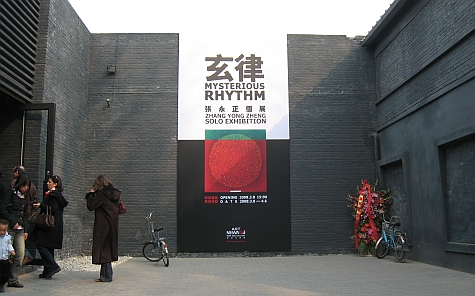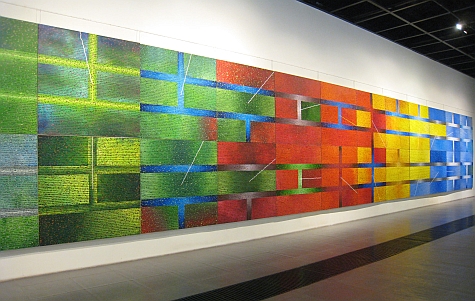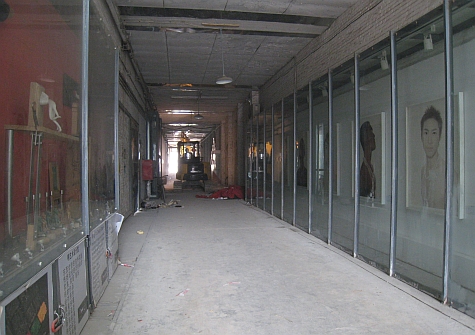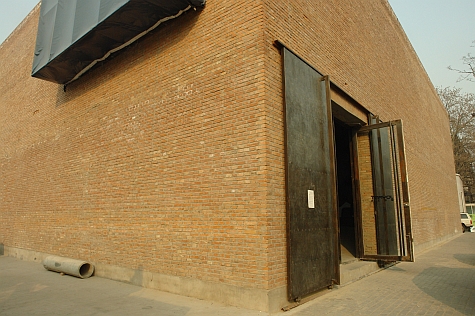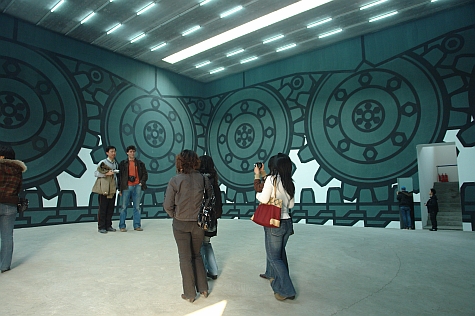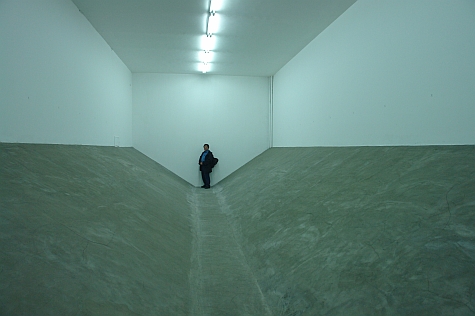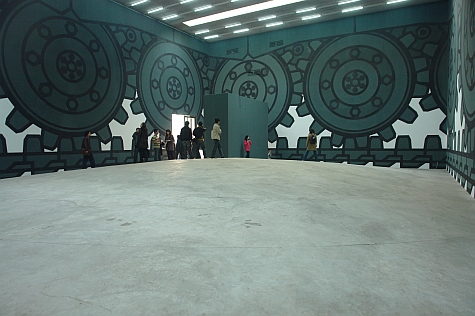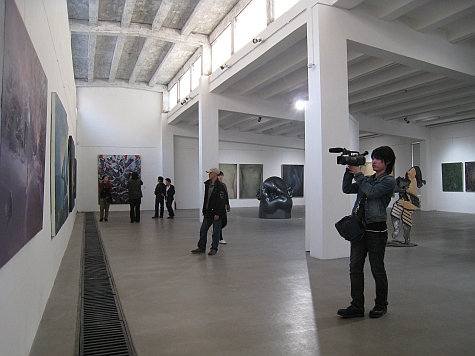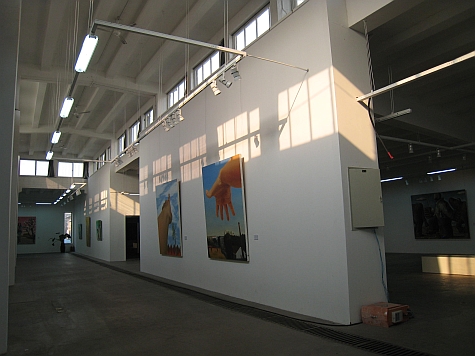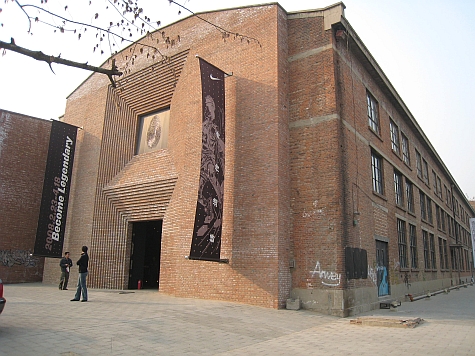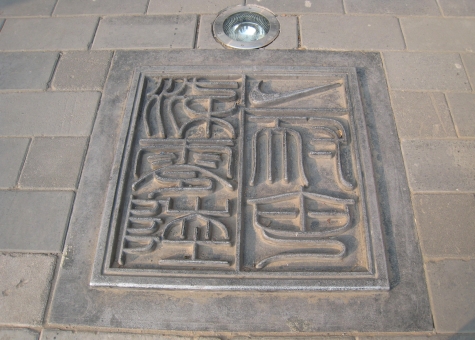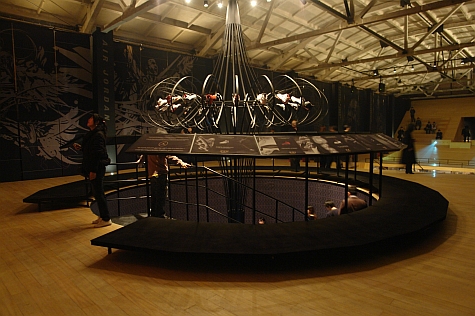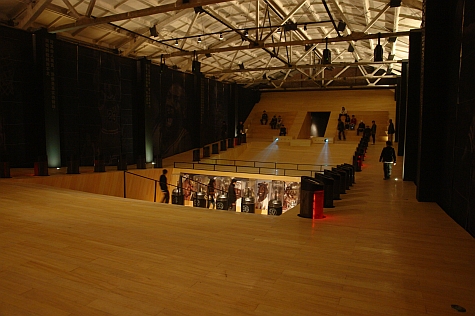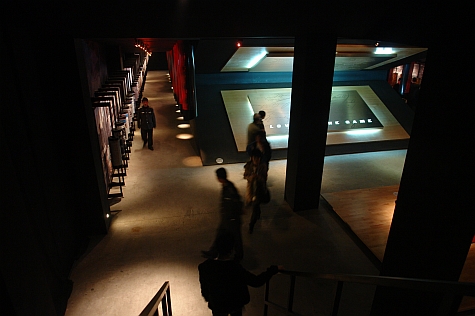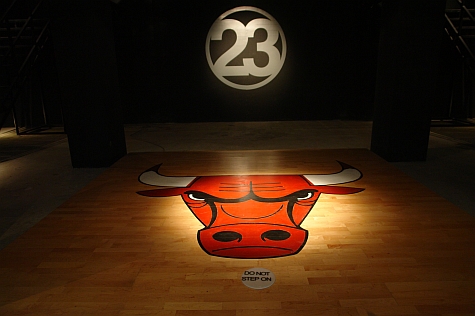Just inside the gate is a large billboard mapping out the district. The area isn’t completely filled out yet, and it would still take more than a single day to see everything.
Also knowns as the Dashanzi art district, the original buildings are 1950s-era Soviet and East German designed factories.
On this sunny day, there was art both inside and outside the buildings.
The variety of contemporary art ranges from young subjects …
… to the more mature.
Some galleries had more conceptual works. Here’s some tree tripods …
… and room with spots on the floor.
A set of red stacked boulders is a durable landmark.
The Mao suit recalls communist fashion. I’m unsure whether the graffiti was by the artist or a vandal.
The factory buildings are known for their large open spaces, with skylights providing natural light. This is a great setting to show art.
The spaciousness is a luxury that displays artistic works well.
Some streets look a little tough, but the graffiti is more than just tags.
Some more complete drawings have enough imagery to tell a story.
It’s fun to fit in with life-sized sculpture.
The People Series 1 by Liu Ruowang is more than life-sized.
Looping back toward the west entrance, this meaning of this large installation wasn’t immediately clear.
From the front view, I presume that the artist is male, with a Tinkerbell obsession (and a warped perspective on feminity).
A more modest sculpture is a stacked set of smiles.
We were hungry, so out the west gate, we crossed over to the shops on the other side.
Since Eric had 6 months of experience of living in Beijing, he was more than competent to place the order for lunch.
We ordered a well-balanced meal with meats and vegetables. This was definitely not southern style Cantonese cooking.
After lunch, we crossed back east over the bridge.
The Building Code Violations II exhibition was featured at the Long March Space.
As we entered, there was row of lockers to the left. We were unsure about whether we were supposed to check our belongings.
As we puzzled, doors randomly opened and closed. It’s art!
I’m not sure whether the duct into the sidecar of the motorcycle was imagery on venting exhausts, or a path for riders to slide in.
The overturned van continued to have a red flashing light inside.
This installation used to be a real functioning vehicle.
An installation by Xu Zhen had an orderly line of mice parading down a wall.
Water fell around the cage in this alcove.
Even on a Sunday, construction on the district continued. This photograph may look orderly, but that’s the demolition by a backhoe, not art!
In the back alleys, some of the features — such as a circular door — reflect Chinese architecture.
While a workman was setting the concrete on the edge of sidewalk …
… an musician performed guitar with a portable amplifer, selling CDs.
At the New Age Gallery, Zhang Yong Zheng had a solo exibition called Mysterious Rhythm.
A painting spanning an entire wall, Twenty Four Solar Terms is related to the Chinese agricultural calendar.
A yet-to-be-finished gallery was advertising a future show by Wu Guanzhong. This artist is noted for having sold a painting in 2007 for $4.8 million.
We could hear a lot of construction noises coming out of an open hallway.
When completed, the building will be structured as an internal mall, where art is already behind large display windows.
The JoyArt gallery is a distinctive rectangular brick building with large doors.
Immediately inside those large doors was a wall labelling the exhibit by Wang LuYan titled The Other Side of Totality.
Walking around that wall, the floor was a concrete mound. On all walls were illustrations of mechanisms.
One wall had an entry into another room.
In that room was a large trench. Was this the other side?
Coming out of the room with the trench, the mechanistic illustrations on the other walls were visible.
Down the street, we found another gallery with high windows.
In addition to visitors taking snapshots, a few people came with video cameras.
A diptych by Sun Kan was titled Position.
Late in the afternoon, the sun was shifting to leave some galleries dim.
Towards the northeast edge of the district was a large building with large banners.
The chop in the ground in the front entry illustrated the investment in this installation. I didn’t initially notice the logo in the upper right.
We couldn’t find a handle to open the doors … and then tall doors automatically parted. We walked into a dim space, and up a spiral staircase. The second floor was filled with strange shapes.
From the stairs, looking down to the other end of that level, we saw people sitting on steps.
When we walked to that end of the space, we could then see movies being played on the screen below eye level. This was the Nike 706 gallery.
Back down the stairs were some additional displays.
The number 23 signals Nike’s Jordan brand.
Filling out the sports theme was a gallery of basketball jerseys.
After a full day of viewing contemporary Chinese art, the Nike gallery was a jarring commercial exposition. China hasn’t had a history of media advertising as we have in the west, so local people haven’t developed similar aversions towards certain types of advertising.
Later, I had a discussion with one of Eric’s student friends about the 798 Art Zone. He felt that the style was too westernized, and preferred more classical collections. In contrast, I prefer to see works — when possible — of living artists. The 798 art zone demonstrates that art in China is not a cottage industry, but a flourishing community and business at level of other leading cities in the world.

